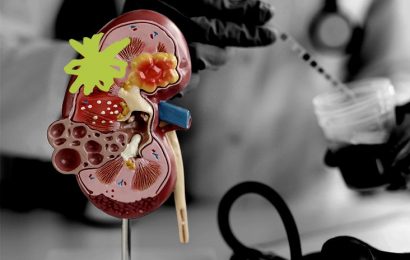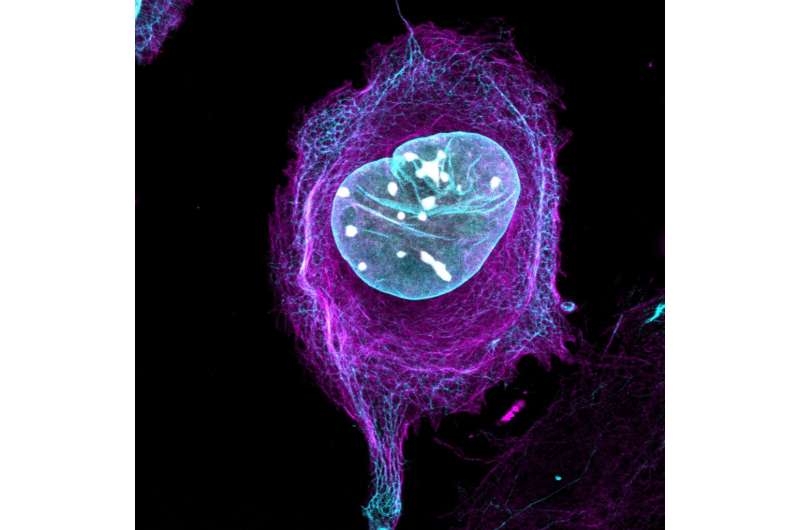
The placenta, critical for healthy embryo development, is a multi- purpose organ with a precise lifespan—the length of a pregnancy. New research from the Stowers Institute for Medical Research suggests that further exploration of the placenta’s roles and capabilities may one day lead to insights for positive pregnancy outcomes.
The study published in Development focuses on a unique property of many cells comprising the placenta that explains how these cells perform essential functional and physical roles to support a developing embryo.
“Following birth, the placenta is often tossed in the medical wastebin,” explained Stowers Investigator Jennifer Gerton, Ph.D. “This makes it the most overlooked, undervalued, and understudied organ in reproductive science.”
Placental cells are very large and have high metabolic activity, enabling them to serve as a physical barrier and to facilitate nutrient and hormone exchange between mom and baby. New insights from research performed on mice led by former Postdoctoral Researcher Vijay Singh, Ph.D., from the Gerton Lab, could help researchers and clinicians understand in greater detail how the placenta supports healthy human pregnancies.
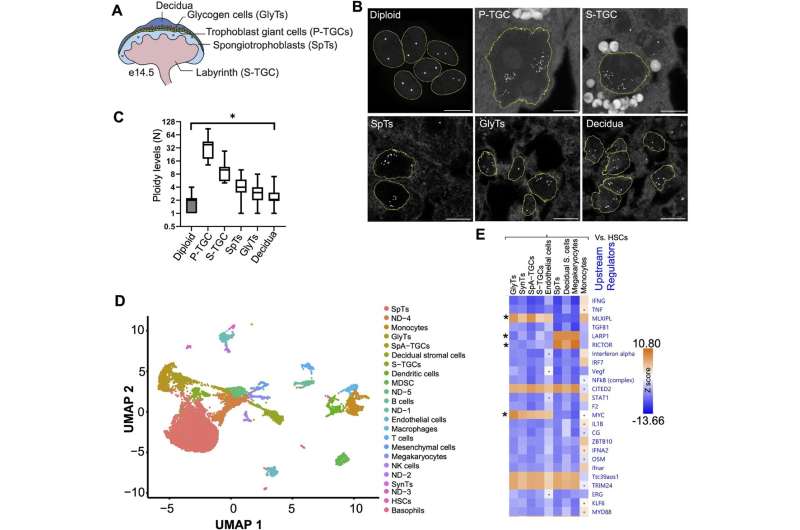
“We really care about conditions like birth defects and premature birth, but we are often solely focused on the baby,” said Gerton. “Many of these problems impacting the fetus originate with the placenta, and until we understand it more, we are missing vital information.”
Normally, when cells divide, their chromosomes are first duplicated and then split between the two new cells. The distinct feature of placental cells identified here originates from a modified cell cycle, where following replication of chromosomes, the cell does not divide, and instead retains an entire extra chromosomal set. This cycle can occur repeatedly so that placental cells grow to gigantic proportions with hundreds of chromosome copies, a characteristic called polyploidy.
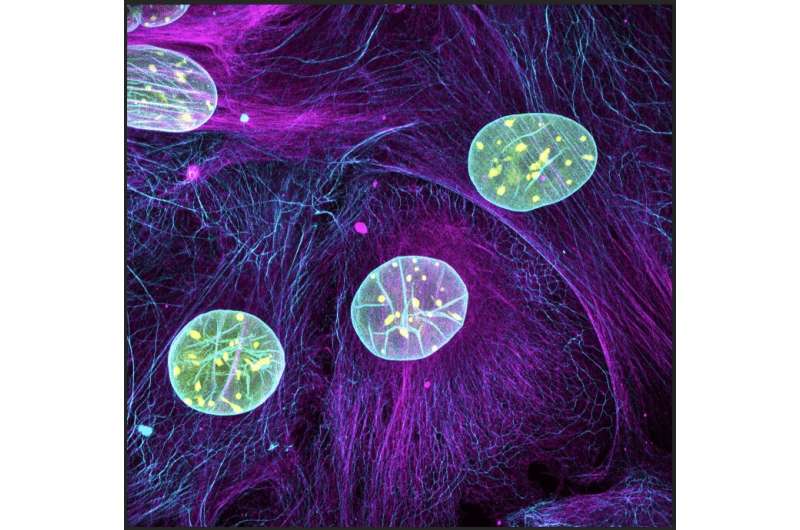
While certain placental cells were already known to be polyploid, a surprising aspect revealed in the current study was that many cell types in a mouse placenta have this feature. “When each cell has multiple copies of the genome, that makes them very robust. The large size also helps create a barrier between the developing embryo and the mom,” said Gerton. “The placenta may be the most polyploid organ in a pregnant female mouse, but more research into polyploidy is warranted.”
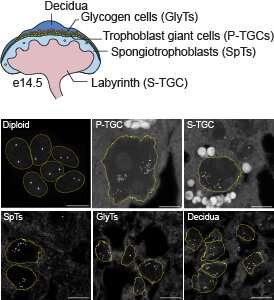
Polyploid placental cells are essential for normal development of the placenta and a healthy placenta is vital for embryonic development and a successful pregnancy. Problems with the placenta are linked to preterm birth, restricted fetal growth, preeclampsia, and even fetal death. The placenta performs various functions including nutrient transport from mom to fetus, hormone and blood cell production, and protecting the developing embryo from the mother’s immune system which would otherwise reject it.
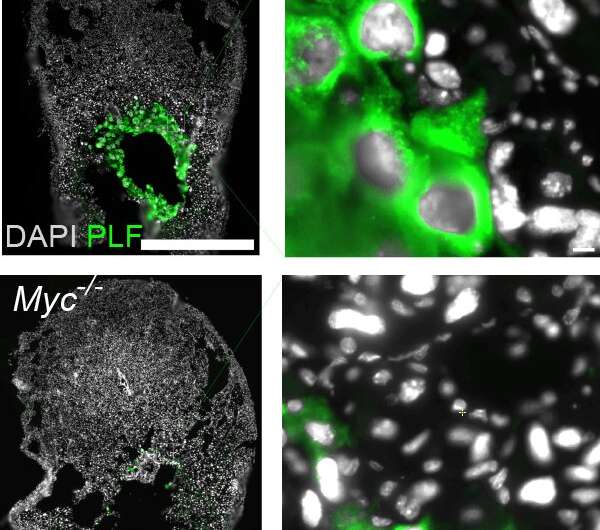
The study revealed the modified cell cycle controlling polyploidy is governed by a regulatory gene called Myc which is found in organisms as diverse as fruit flies, mice, and humans. In addition, Myc supports DNA replication and prevents premature cellular aging of the placenta.
The team made a genetic mutation in Myc that caused cells to fail to achieve polyploidy in mouse placenta. “Based on the outcome, we speculate that if human placental cells do not achieve polyploidy, for instance due to environmental toxins like alcohol or cigarette smoke, the placenta will not be able to do its jobs and support a healthy pregnancy,” said Gerton.
“Many people donate organs for scientific research,” said Singh. “If more parents are aware of the benefit of studying human placentas, perhaps they would be willing to donate theirs to push research forward.”
“We might learn a lot if more attention is paid to the placenta which can be the cause of disease in a baby,” said Gerton. “I feel like generally as scientists and as a society, we’re simply not giving the placenta its due consideration.”
More information:
Vijay Pratap Singh et al, Myc promotes polyploidy in murine trophoblast cells and suppresses senescence, Development (2023). DOI: 10.1242/dev.201581
Journal information:
Development
Source: Read Full Article


